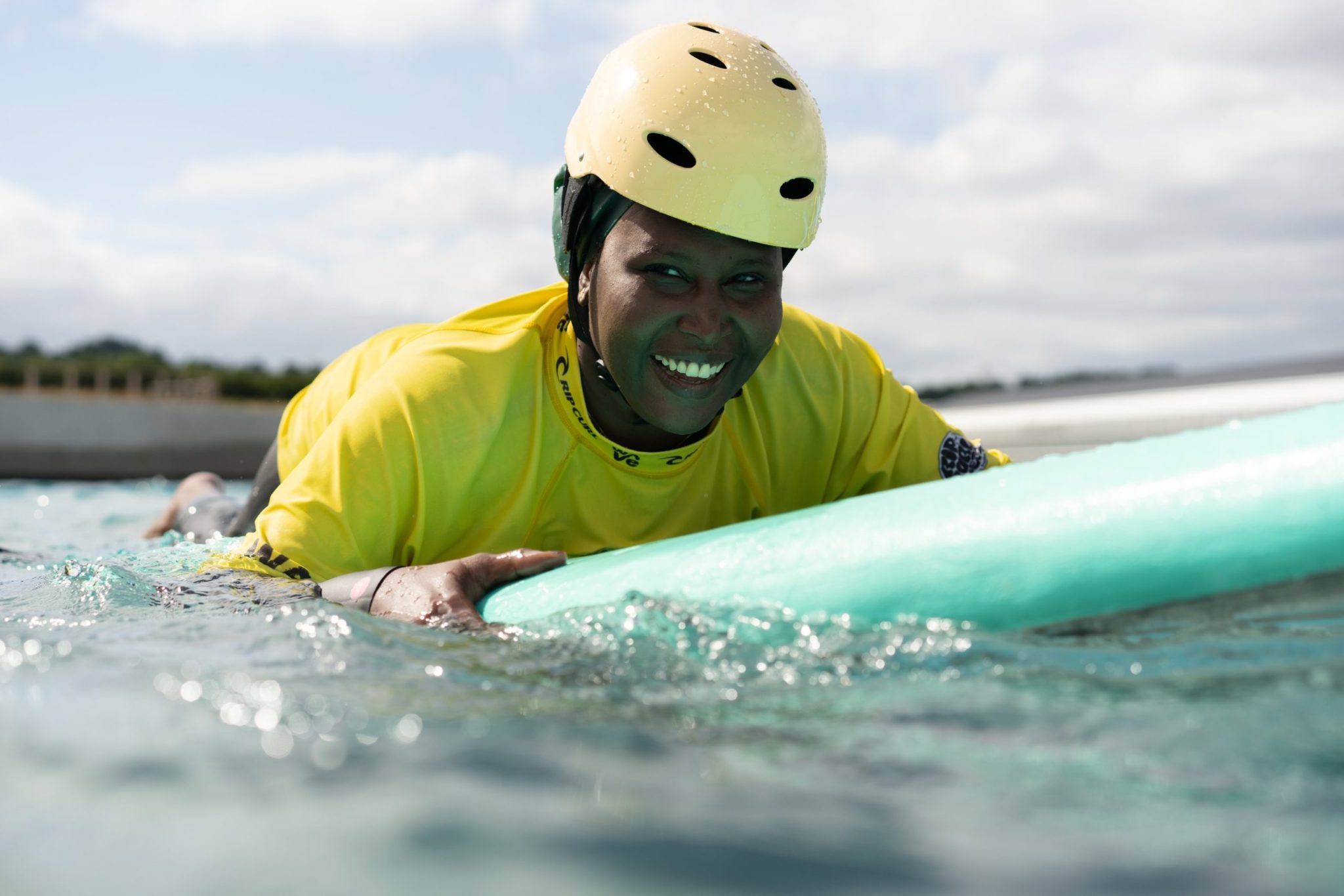Following the breath of the wave
One of the commonest experiences when learning to surf is the tendency to panic and stop breathing calmly, just when you need a fluent rhythm of inhalation and exhalation. It is usually caused by the anxiety of the wipeout. But wipeouts are usually a safe tumble, and you pop up laughing, excited for another ride. And if we think of surfing as a form of mindfulness, one of the central techniques of meditation (and of mindfulness), is to follow the breath, using it as a focus for staying in the moment. This is all very well when we are relaxing on the sofa, but how do we be mindful and follow the breath when we are in a liquid environment that constantly changes shape, causing panic as we attempt to stand on the board for the first time ever?
If we follow the perspective that surfing as mindfulness is not ‘inside’ us but in our connection to the ‘outside’ world around us, a good tip for learners (and a refreshing perspective for regular surfers) is to forget about following our breath and instead follow the ‘breathing’ movement of the wave. This is easier said than done, but attending to the breath of the wave is liberating and enhances the surfing experience. The wave’s inhalation is the rising blue-green face, exhaling as it breaks into churning whitewater. The unbroken wave holds the air like an expanding lung, while the breaking whitewater releases the air in a gasp, from the sigh of a small wave to the consuming, mega bellows of big waves. As we follow the peak before it breaks, we will be truly surfing the ‘curl’, the fastest and most critical point of the wave, if only for seconds. Here, we will be propelled by the engine room of the wave’s expanded lung, before the breath expires in a mass of foam. And here, in the breath of water, we are invited to join its expression and find flow.
Go with the flow
The word ‘flow’ is important in surfing vocabulary, and often expressed in our surfing repertoire. The most ‘stylish’ surfers have an abundance of flow. They do not stutter, or look as if they may fall at any moment. They follow from the held breath to the outbreath of the spinning ride in one continuous trajectory. Flow and style are intimately linked. The key to flow is to avoid turning inward, committing your attention to incorporating obstacles presented by the wave into the ride. For example, a sudden ledge popping up on the wave’s face is used like a skateboard ramp to gain a little speed; a collapsing section provides a good opportunity to float over it rather than allow it to flip your rail and send you tumbling; someone ‘in the way’ is a chance to react quickly and cutback.
Surfing like this is often about adaptation and collaboration. In this movement from our own heroic performance to responding to whatever the wave throws at us, we develop a deepening awareness of how our surfboard, the wave patterns, and other surfers in the water help or hinder our flow. Here surfing is an immersion in the ever-changing elements of board design, wave types, and crowd behaviour. This is often about letting the wave, and the breath of water, do the work for you, rather than fighting against it. When the lip tubes over you, take a seat in the ‘green room’ and enjoy the view. When someone falls in front of you, arc around them elegantly. Of course there is control, focus and attention from the individual, but this is influenced by all the environmental factors around us. And this is why surfing as mindfulness is not going inward, but placing ourselves into the bigger body and mind of the living, breathing world around us that we all share. We could call it ‘letting go’, not giving up, but responding to the wave and the breath of water.
And we can think of waves as living beings, surfing with the breath of water. But try not to think on the wave’s behalf as you adapt; try not to outwit the crowd or transfer your own limitations on to the design of the board. Embrace board, wave and crowd. When it’s time to breathe, watch the wave. Stick with it and do it. Follow its flow. All we can do is respond and react. And session by session we can get to understand and adapt to the changing moods of waves, connecting to the moving environment that surrounds us, a water blanket doubling over as we slip into each and every ride.
